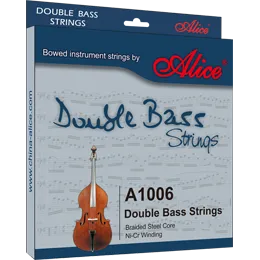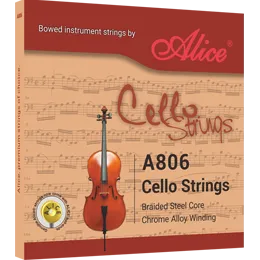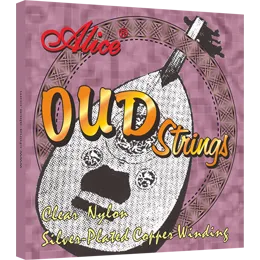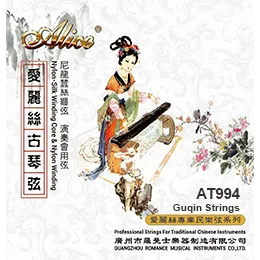Cello Plucking: Can You Pluck a Cello with Your Fingers? How-To And Tips
Very likely, the first instrument that will come to your mind whenever you think about a cello is the deep, rich tones produced when moving a bow across the strings. However, this versatile instrument can do way more than that. Cello Plucking, or pizzicato, is another very important technique that gives music its different flavors. In this article, we at Alice will appreciate how much grace exists in cello plucking, explore techniques and tips for mastering this technology, and provide recommendations to get you on board.
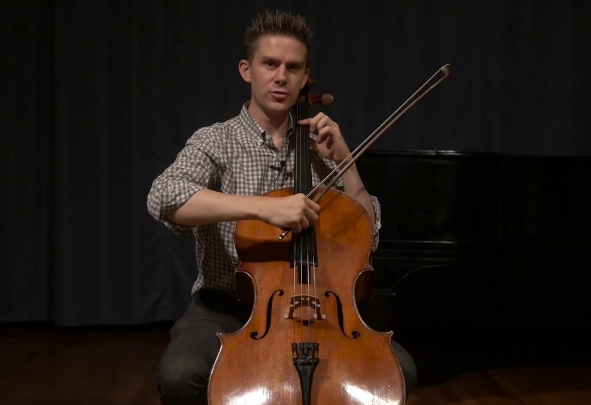
Photo from YouTube Trunnel @ Cello Solos Today
The Charm of Cello Plucking in Famous Songs
Many famous pieces feature cello plucking or pizzicato as a percussive quality of the instrument, which can be both subtle and striking. Perhaps the most recognizable is Johann Sebastian Bach's "Suite No. 1 in G Major." In the prelude, the pizzicato sections provide a rhythmic pulse, offering a nice contrast to the flowing bow work.
Another famous piece is "The Elephant" from "The Carnival of the Animals" by Camille Saint-Saëns. This pizzicato imitates an elephant's heavy footsteps; it tends to bring out yet another one of the lighter sides of the cello. In more contemporary music, the soundtrack of "Pirates of the Caribbean," composed by Hans Zimmer, incorporates pizzicato in a manner showing urgency and adventure. These examples of cello plucking illustrate the expression of diverse emotions and atmospheres; this can be very useful for any cellist.
Types, Steps, and Tips on How to Pluck a Cello
Pizzicato
Pizzicato is plucking the strings with the fingers. This is how to do it:
· Place the right hand above the strings and up near the fingerboard, with the thumb lightly touching the side of the fingerboard, providing stability.
· Plucking Motion: Use the fleshy part of the index finger to pull and release the string. The motion must be quick and firm.
· Sound Production: Try and pluck the string so that clear, resonant sound production is achieved. Avoid using too much force, which might give a harsh tone.
Left-Hand Pizzicato
Left-hand pizzicato is a bit more advanced, where you actually use your left hand to pick up the strings. This can be done while using the bow in the other hand, hence adding to the overall level of difficulty in playing.
· Finger placement: Use the fingers on your left hand to press the string down at the pitch you want to play.
· Plucking Motion: Pressing the string, use your left-hand thumb or another finger to pluck the string from the other side. This takes much practice to be coordinated.
· Practice Tips: Begin slowly and build up speed. Pay attention to making a clean, even sound.

Speed and Technique in Cello Plucking: FAQs
How to Pluck Faster on Cello?
Build up strength and dexterity in your fingers to pluck faster on the cello. Do scales and arpeggios in pizzicato, developing the ability to feel an increased speed of play without loss of accuracy. This will enable you to develop muscle memory for plucking faster.
How Fast Can Cello Play Pizzicato?
The tempo at which one can play pizzicato on the cello depends on the individual degree of skill and, more significantly, on the amount of practice one has had. The professionals could play very fast pizzicato passages and often could match and even go beyond the speed of the bowed notes. If you want impressive speeds, you will get it with great devotion and proper technique.
Best Strings for Cello Plucking – Alice A805A Cello Strings
The good quality of strings can greatly make a difference when learning to pluck on the cello. Our suggested kind is the Alice A805A Cello Strings, which give a guarantee of tonal excellence and durability. They have been designed to give an effect of fullness and warmth in sound character, both in pizzicato and bowing. Their durability allows them to undergo constant plucking without losing their quality.

Songs to Practice Cello Plucking
Here are some pieces that are perfect for working on cello plucking:
· Bach "Suite No. 1 in G Major": The prelude has several sections of pizzicato perfect for beginning students.
· Saint-Saëns "The Elephant": It is a delightful piece that uses pizzicato to great, playful effect.
· "Twinkle, Twinkle, Little Star": Very simple and just right for beginners to practice simple pizzicato.
· Pachelbel's "Canon in D": Good for intermediate players because of its mix of bowed and plucked sections.
· "Happy Birthday": Nice, easy work on special occasions to practice on, for pizzicato.
Conclusion
At Alice, we believe in delivering high-quality cello accessories to enhance the playing experience. Our Alice A805A cello strings are crafted with precision and care to ensure that every note you play, whether it be bowed or plucked, does so to its best. Want to feel the difference quality can make? Explore our range of cello products for more information on our many offerings and how to get the right accessories for your music creation journey.
Whether you're a student cellist or a seasoned pro, we've got products to back you up on all your needs and desires for making it in music. Take your time, and delve into the world of cello plucking with confidence, knowing Alice has your back with the best cello strings and accessories. Happy plucking!
Relate News


Nylon Strings for Classical Guitars: Everything You Need to Know

5 Key Indicators to Identify High-Quality Acoustic Guitar Strings

What Are Guqin Strings Made Of?

Silk Strings, Steel Strings, and Nylon Strings: Which Is Best for Your Traditional Music Performance?

Complete Guide to Guitar String Materials

Orchestral Strings Explained: A Beginner-Friendly Guide to Violin, Viola, Cello, and Double Bass

Tone Comparison of Brass Alloy, Phosphor Bronze, and Coated Guitar Strings

How to Choose the Right Guitar Strings for Your Performance: A Scenario-Based Buying Guide

OEM Guitar String Customization: A Detailed Guide to the Process

Copper Alloy vs Phosphor Bronze: Which Acoustic Guitar Strings Suit You Best?










